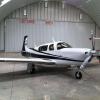High oil pressure beyond limits
-
Members Online
- McMooney
- LANCECASPER
- M20S Driver
- Brandt
- mikey757
- Sabremech
- daytonabch04
- Marahute
- ta2too
- zgasman
- TCC
- Jim Peace
- richardbrochu27
- Greg Ellis
- dzeleski
- 67 m20F chump
- James McDiarmid
- Lois
- wivika2537
- 7.Mooney.Driver.0
- redbaron1982
- Aviationist
- Bunti
- MikeOH
- Ned Gravel
- jma201
- Joshua Blackh4t
- Montreal
- Rotorhead
- Pinecone
- exM20K
- DonMuncy
- Mellow_Mooney
- eman1200
- Jbguns24


Recommended Posts
Join the conversation
You can post now and register later. If you have an account, sign in now to post with your account.